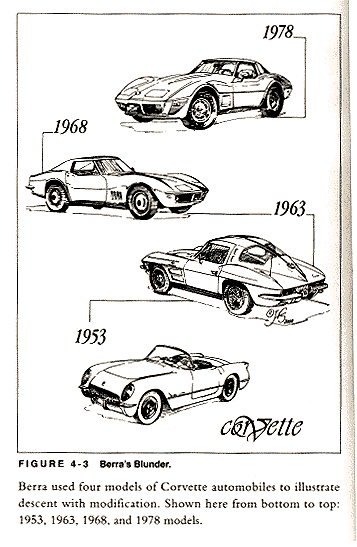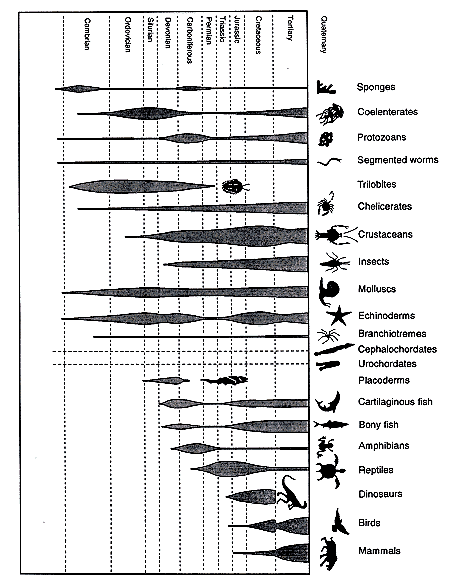Berra's Blunder?

"If you compare a 1953 and a 1954 Corvette, side by side, then a 1954 and a 1955 model, and so on, the descent with modification is overwhelmingly obvious. This is what paleontologists do with fossils, and the evidence is so solid and comprehensive that it cannot be denied by reasonable people."T. Berra, Evolution and the myth of creationism,1990, pg 117-119
 Does the sequence of appearances of fish, amphibians, reptiles, and mammals, which all have the same body plan, demand descent with modification?
Does the sequence of appearances of fish, amphibians, reptiles, and mammals, which all have the same body plan, demand descent with modification?
"Everything evolves, in the sense of "descent with modification," whether it be government policy, religion, sports cars, or organisms. The revolutionary fiberglass Corvette evolved from more mundane automotive ancestors in 1953. Other high points in the Corvette's evolutionary refinement included the 1962 model, in which the original 102-inch was shortened to 98 inches and the new closed-coupe Stingray model was introduced; the 1968 model, the forerunner of today's Corvette morphology, which emerged with removable roof panels; and the 1978 silver anniversary model, with fastback styling. Today's version continues the stepwise refinements that have been accumulating since 1953. The point is that the Corvette evolved through a selection process acting on variations that resulted in a series of transitional forms and an endpoint rather distinct from the starting point. A similar process shapes the evolution of organisms."T. Berra, Evolution and the myth of creationism,1990, pg 118-119.
Critics claim that, in fact,
this example actually demonstrates that similarity can be due to an archetype
in the mind of a designer!
"Of course, every one of those Corvettes was designed by engineers. The Corvette sequence - like the sequence of Beethoven's symphonies to the opinions of the United States Supreme Court - does not illustrate naturalistic evolution at all. It illustrates how intelligent designers will typically achieve their purposes by adding variations to a basic design plan. Above all, such sequences have no tendency whatever to support the claim that there is no need for a Creator, since blind natural forces can do the creating. On the contrary, they show that what biologists present as proof of "evolution" or "common ancestry" is just as likely to be evidence of common design."P. Johnson, Defeating Darwinism by opening minds, 1997, pg 63.
"But Berra's analogy actually spotlights the problem of using a sequence of similarites as evidence for Darwin's theory. We all know that automobiles are manufactured according to archetypes (in this case, plans drawn up by engineers), so it is clear that there can be other explanations for a sequence of similarites besides descent with modification. In fact, most pre-Darwinian biologists would have explained such sequences by something akin to automobile manufacturing - that is, creation by design. So although Berra believed he was defending Darwinian evolution against creationist explanations, he unwittingly showed that the fossil evidence is compatible with either. ... Berra's blunder demonstrates that a mere succession of similar forms does not furnish its own explanation. Something more is needed - a mechanism."
J. Wells, Icons of Evolution,2000, pg 69-70.